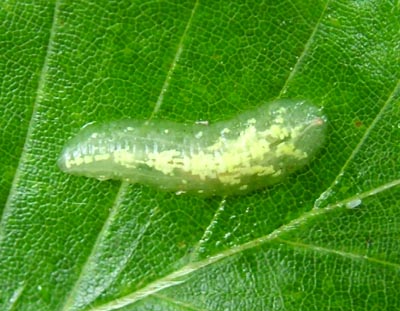Constant rain.
The following specific food chain shows four species that are intimately bound by a mandatory dependency: no species in the chain can exist without all of the previous parts of the chain being in place.
|
Leaves of the Beech tree - Fagus sylvatica. |
Phyllaphis fagi - the Woolly Beech Aphid |
|
Larva of Melangyna cincta - a hoverfly that eats only Phyllaphis fagi. |

Entomophthora muscae - a parasitic fungus on the adult hoverfly. |
|
So the aphid Phyllaphis fagi eats only Beech leaves. Melangyna cincta eats only larvae of Phyllaphis fagi. And the Entomophthora fungi are specific to a particular host, in this case Melangyna cincta. If any part of the chain is broken, subsequent species cannot exist. There are, of course, many other species that are dependant on the Beech tree for their existence, and there are hundreds of species that are directly dependent on Oak. The implications of this type of dependency mean that a seemingly simple action can have dramatic consequences. Removal of one species can impact hundreds of others. This is a good argument for planting only native species of tree. If alien species are introduced, then our native species cannot make use of those resources: the parasites and dependent species that live on introduced plants do not naturally exist here. Furthermore, introduction of alien species uses up space that could much more productively be occupied by native species. Introduced species do not have a neutral effect: they have a negative effect. I should point out that the Beech tree is almost certainly dependent on a number of fungi that live on its roots. Fungi can appear many times in a single food chain. This is perhaps the most important page on my website. |
|
